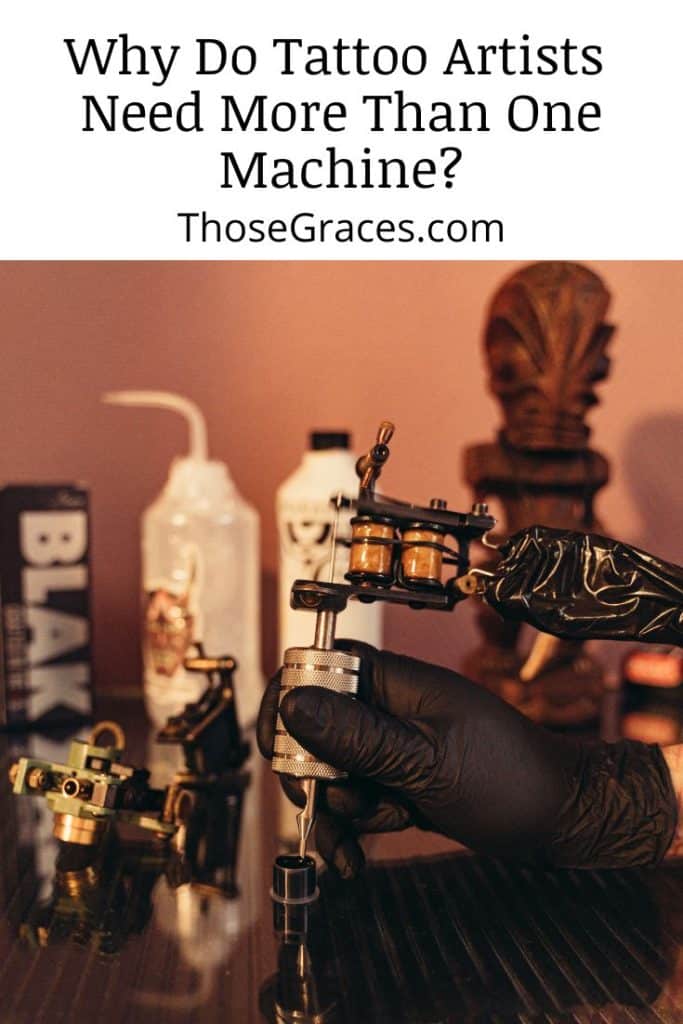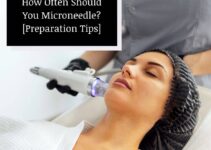“Why do tattoo artists need more than one machine?”, you ask…
Well, probably for the same reason, I would hate to use one pencil for everything, including drawing, shading, sketching, and coloring.
The world’s most famous tattoo artist, Scott Campbell, refers to skin as an “ephemeral medium” that not only lives on forever but won’t be sold off, a precious idea worth adopting. (1)
It could be wise to purchase more machines, but first, I want to reveal something else (keep reading)…
Table of Contents
Key Takeaways
- Having a range of tattoo equipment, including multiple tattoo machines, can be essential for creating high-quality tattoos that meet the specific needs of your clients.
- Different types of tattoo machines are suited for different functions, such as lining, shading, and coloring.
- Proper tattoo equipment and training can be essential in developing the skills needed to succeed in the tattoo industry.
- Investing in a particular type of tattoo machine will depend on the individual tattoo artist’s needs and preferences.
- Formal education and training can help develop the essential skills needed to succeed in the tattoo industry.
As a tattoo artist, you likely know firsthand how important it is to have the right tools for the job. But when it comes to tattoo machines, why settle for just one when you can have multiple? Let’s find out
Reasons To Get More Than One Tattoo Machine
Do you know why you need various tattoo machines? Because tattooing is superb!

If you don’t believe me, here’s what Scott Campbell has to say about tattooing (1):
“Tattooing’s one of the last things you can’t mass produce“.
To caress this art of tattooing, you have various machines at your disposal. The type of machine you want will reflect how the tattoo will turn out.
If you’re making your living as a professional tattoo artist, you, most likely, need to bet on the following:
Enough tattoo equipment (and mad drawing skills) to keep up with the clientele and provide as much variety to both artist and customer.
Sometimes, you’ll require a specific machine to work on a particular body part. Other times, some machines will work best for shading, and others for blackout tattoos.
For this reason, variety is not too wasted and can be handy…
In this case, the machine maketh the artist, so pay attention because I’m about to guide you through a list of them!
READ MORE: How to Avoid Tattoo Fading
Types of Tattoo Machines
As I’ve mentioned above, more than one machine can tackle different functions. I’ve listed a few that are and should be stapled pieces within your parlor.
These tattoo machines have developed over time and can offer a ton of options to users, sorted as follows:
1. Coil Machines
These are the most common machines you’re likely to come across. Coil machines use armature bars connected to a central needle bar.
This bar contains a set of even smaller needles that add ink to the skin. “One of the best kinds is made by Vlad Bad Irons.” Check out an expert review to figure out more:
2. Rotary Machines
These bad boys use a motor and a rotary bar to move the needle up and down, which can create a smooth and consistent tattooing experience.
Many tattoo artists prefer rotary machines because they can be easier on the hand and wrist, which can help reduce fatigue during lengthy tattoo sessions.
A study published in Science Direct found that rotary machines may result in less muscle fatigue and discomfort than traditional coil machines (2).
3. Pens
Next, we have pen machines, also known as microblading machines.
These are designed to create fine, hair-like lines and are often used in cosmetic tattooing procedures, such as eyebrow microblading.
CHECK: Tattoo Pen vs Machine
4. Pneumatic Tattoo Machines
Picking at your question of why do tattoo artists need more than one machine is tricky enough.
Now that you know the answer, the adventure doesn’t stop (here’s something about pneumatic tattoo machines):
Pneumatic tattoo machines are another option you might come across. These machines use compressed air to move the needle rather than an electromagnetic current or a motor.
They are known for being lightweight and easy to maneuver, making them a popular choice for tattoo artists who want a more ergonomic machine.
5. Shaders and Liners
Liner machines outline the tattoo design and create clean, precise lines. They typically operate faster than shader machines and are ideal for creating fine, detailed lines.
Shader machines, however, fill the tattoo design with color or shading. They typically have a wider needle grouping and operate at a slower speed than liner machines.
Don’t forget to check out my beginner tattoo artist guide.
Frequently Asked Questions
1. Is it necessary for a tattoo artist to have multiple tattoo machines?
Ultimately, investing in multiple tattoo equipment will depend on the individual tattoo artist’s needs and preferences.
2. How many tattoo machines should a tattoo artist have?
In general, having a range of proper equipment can be helpful in the tattoo industry to ensure that you have the tools you need to create high-quality tattoos.
3. Are expensive machines better than cheaper ones?
While it is true that some more expensive tattoo machines can be more advanced or made with higher-quality materials, the perfect appliance is sometimes different because skills differ.
4. Is formal education or training, such as a tattoo apprenticeship, necessary to become a tattoo artist?
Conclusion
Hacking away at your question, “Why do tattoo artists need more than one machine” can be frustrating. But you’re better off now that I’ll wrap it all up:
Having multiple tattoo machines ― whether new school or traditional machines ― can increase versatility and efficiency.
Often, picking multiple ones means having a backup in case any of your dear belongings breaks.
Not only does variance augment your tattooing style, but it gives you the flexibility to pick a favorite ― whatever your heart desires (and your customer’s, of course!)
I don’t even talk about critical skills, which, indeed, is a stellar benefit you learn from maneuvering different types of machines. Here’s what’s magnificent…
Different machines are designed for specific tasks, and investing in a range can allow tattoo artists to easily switch between techniques.
Simply put, having multiple tattoo machines in your collection is a good idea, and it will surely come in handy again and again.
Plus, multiple tattoo schools can also introduce you to other methods, adding to your arsenal of skills.
So, if you are psyched to get started, roll up your sleeves, and get deep into the chemical butter! And remember to leave me a comment first. I’d be happy to hear about all your SNAZZY tattooing tips.




